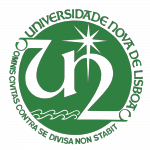InSMART - Integrative Smart City Planning - The case of Households in Évora
- Citation:
- Gouveia, JP, Bilo N, Gargiulo M, Giannakidis G, Gregório V, Duncan I, Nunes V, Robinson D, Seixas J, Valentim A. 2014. InSMART - Integrative Smart City Planning - The case of Households in Évora. Urban Futures Squaring Circles: Proceedings, International Conference on Urban Futures Squaring Circles 2050,. , Calouste Gulbenkian Foundation: Institute of Social Sciences of the University of Lisbon and Calouste Gulbenkian Foundation
Abstract:
European policy has acknowledged the significance of local and regional communities for the
deployment of new low carbon technologies and their potential for sustainable energy production and use.
Several initiatives and programmes (e.g. Covenant of Mayors) have been set up to engage European cities in the
effort towards a low carbon future. At the same time, there is a critical need to improve comprehensive city
planning driven by an integrated approach and focused on cost benefit assessment towards sustainable energy
use. Hence, innovative tools and models to assess and perform in-depth analysis of the alternative measures
towards efficient energy use, will help pave the way to fully capture the potential of each city in the most
efficient (economically, socially and technically) way.
The InSMART concept brings together four European cities: Évora (Portugal), Cesena (Italy), Nottingham (UK)
and Trikala (Greece), and scientific organizations of these countries, to establish a methodology for enhancing
sustainable planning for city needs through an integrative and multidisciplinary planning approach, aiming to
developing detailed sustainable energy action plans. Such an approach will identify the optimum mix of short,
medium and long term projects and investments, addressing the efficiency of energy flows across various city
sectors with regards to economic, environmental and social criteria and will highlight priority actions.
Tools and models, like Geographic Information System, buildings models (CitySim and EnergyPlus) and
transport-based energy and carbon model, as well as a technological partial equilibrium energy model (TIMES),
are used to analyse, all the relevant sectors (buildings, industries, transports, waste and water management).
Furthermore, the cities buildings stocks are being characterized through an extensive 110-question survey
(around 410 door-to-door interviews) and will be modelled through a typology approach. Four hundred 20-
question surveys are also being carried out to evaluate transport and mobility patterns, supported on travel diaries and fulfilling different quotas for several variables (geographic location, days of the week, age and working
status) in order to assure representativeness of the data collected.
The main differences between rural and urban areas results from the building surveys and high-resolution
electricity consumption from smart meters for the Portuguese city of Évora are highlighted.


